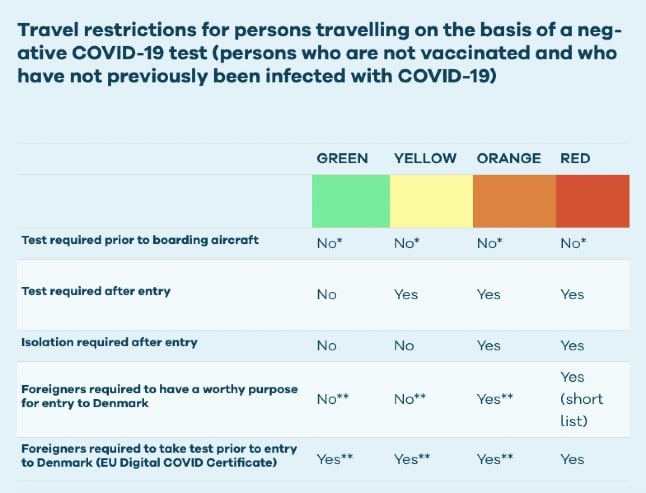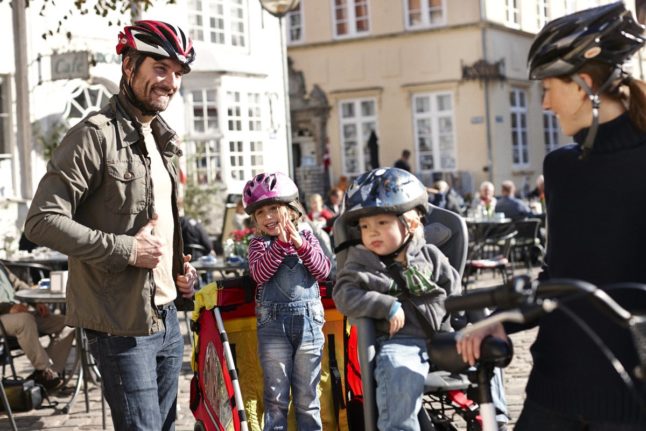In its first travel update for two weeks, the foreign ministry said that five EU countries would be downgraded from the lowest restriction “green” category: Sweden, Germany, Austria, Bulgaria, Liechtenstein, and Slovenia.
Five regions in Norway, Møre og Romsdal, Oslo, Rogaland, Vestfold and Telemark, Vestland and Viken, are also being changed to “yellow” following a rise in infection levels.
The changes will come into force from 4pm on Saturday, August 28th.
The border regions of Sweden and Germany, southern Sweden, western Sweden, and Schleswig-Holstein will remain green however, meaning travellers who have stayed in the border country can continue to travel into Denmark without having to have taken a test after entry (or before entry in the case of foreign residents).
The regions of Burgenland, Carinthia, and Lower Austria will also remain green in Austria.
The main difference between travelling to Denmark from a “yellow” country is that Danish residents who are not vaccinated or immune through previous infection are required to get a test after entry, and those who are not Danish citizens or residents are required to show a negative coronavirus test at border control.
Those arriving by air can get a rapid antigen test for free at the airport between the arrival gate and border control.
In its statement, the foreign ministry recommended that those arriving in Denmark from a “yellow” country now get a PCR test rather than a rapid test.
“In order to strengthen the detection of infection with the Delta variant in Denmark, travelLers are strongly encouraged to take a PCR instead of a quick test upon entry,” it read.




 Please whitelist us to continue reading.
Please whitelist us to continue reading.
Member comments